Happier Meditation Guide to Soft(er) Separation
Welcome. This guide is here to support you—however you need it. There’s no right way to move through divorce or separation, and no timeline you have to follow.
Each session includes a note from me, a meditation, and a reflection prompt. These are not fixes, but companions. Tools to help you stay with yourself through grief, anger, confusion, and whatever else may come. Take your time. Come back when you need to. We’ll do this together.
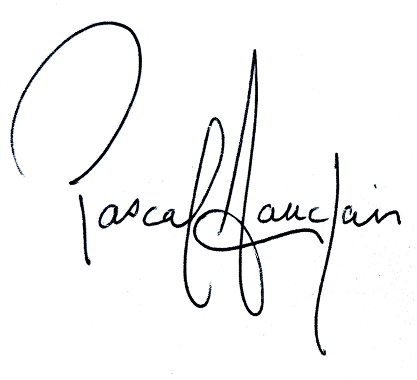
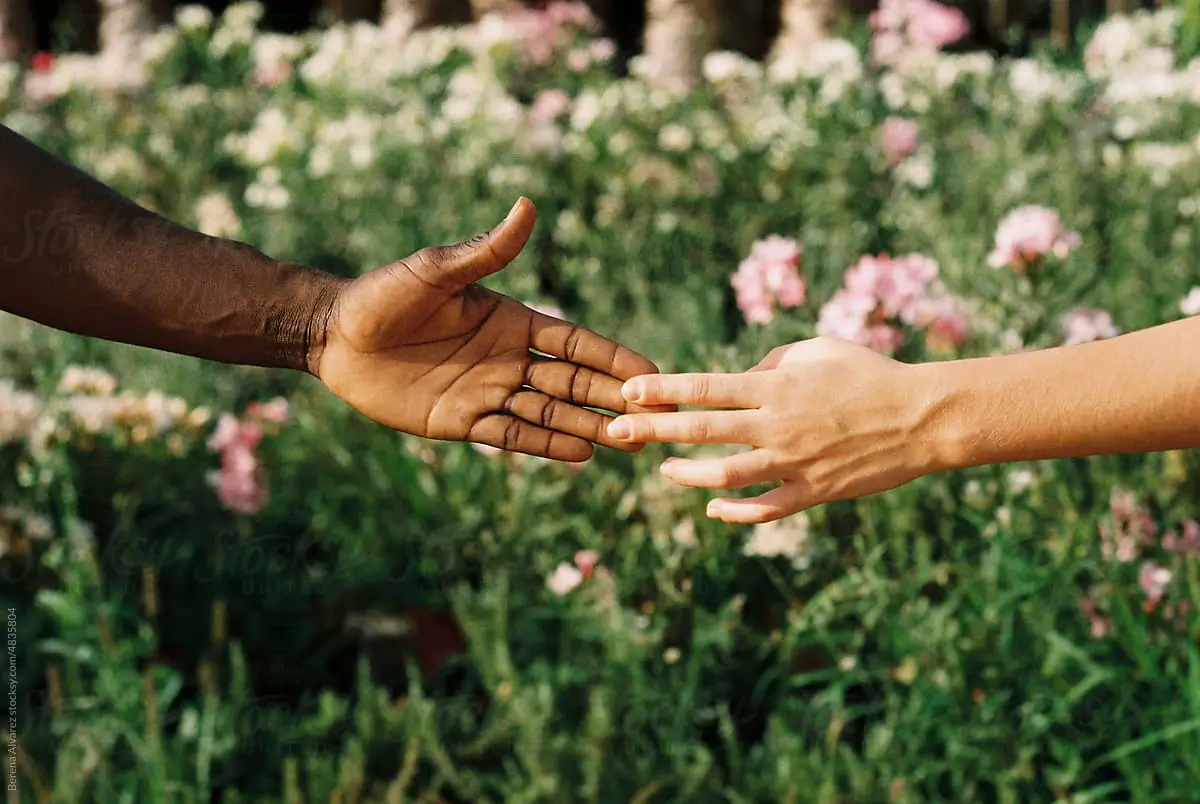

Welcome. This guide is here to support you—however you need it. There’s no right way to move through divorce or separation, and no timeline you have to follow.
Each session includes a note from me, a meditation, and a reflection prompt. These are not fixes, but companions. Tools to help you stay with yourself through grief, anger, confusion, and whatever else may come. Take your time. Come back when you need to. We’ll do this together.

Sessions
Facing Uncertainty
SESSION 01
Deep Dive
Going through divorce and separation can feel like traversing a deep, dark forest where we become afraid of losing the path. I’ve experienced this firsthand—this sense of not knowing in what direction to look, where to go, how to proceed. I’ve worried about the choices that I might make, wondering where they would lead me. That’s part of the reason that it took me years to even make the move of leaving my relationship. Even though I knew it wasn’t working, I was uncertain about the path forward. I was worried about how my partner would find their way after the relationship ended. Of course, this uncertainty can take so many different shapes depending on our circumstances.
You don’t have to fix the uncertainty. You can meet it.
Somehow, an outcome of my meditation practice is that my relationship to uncertainty is much different. I’m able to recognize it, acknowledge it, and even allow it to be there. I can take a bigger view. Rather than fixating on my personal story and what is going to happen to me, I see it as something more universal that we all have in common. None of us knows what the future holds for us. We might think we know what direction we’re heading, but break-ups show us that our ideas are not so stable or reliable. This is a fact of life. To the extent that we can accept this truth, we will experience more openness to what is.
In the meditation that follows, we’ll train the mind to meet the present moment with curiosity, rather than assuming we know what is going to happen. As we do this, we begin to learn on a minute scale that change is a part of life. Tracking change moment by moment in small increments, we can become more open to bigger changes over time, because we can come to see that it’s not so personal—it’s the very fabric of life.
Pause & Breathe



Pascal Auclair
Mindful Investigation
Train in the meditation skill of direct observation. Learn to meet each moment with gentle curiosity and sustained attention.
https://tph-meditations.s3.us-east-2.amazonaws.com/M_07_Wise-Investigation_PA_10min.mp3
Your Turn
Exercise
Facing Uncertainty

It’s too big of a challenge to try and accept the uncertainty of life all at once! Instead, you can just meet it one moment at a time. Today, practice being okay with uncertainty in small increments. Don’t give in to the feeling that your life is not okay because there is so much you haven’t figured out.
Instead, when you notice anxiety around uncertainty, ask yourself, “Can I allow this to be felt, just in this moment?” Try to remember that uncertainty is a universal experience for all human beings, and take it one day, one hour, one breath at a time.
More Meditations for Keeping Your Cool with Hot Flashes on the Happier Meditation App
Your Next Session
Tending Your Grief
SESSION 02
Deep Dive
At the end of a relationship, grief and loneliness unavoidably come in waves. When they are with us, they traverse our whole system and leave us feeling drained. When I was in it, I remember sitting by a beautiful lake, and being so wrapped up in the feeling of despair that I couldn’t even hear the birds singing. I felt like I was alone in the universe, walking around pointlessly. Where there had been hope for the future was just blank.
Eventually, the birds started singing again.
There is a point in time, though, where tenderness arises from within us, and suddenly, maybe ever so subtly, you start to hear the birds again. Beauty becomes accessible in glimpses. And there may even be a recognition that there’s something in the heart or mind that cares for you as you’re going through such a hard time. It’s like an inner friend, or loving parent, or fairy godmother. That’s the beginning of accompanying oneself.
Instead of being completely fused with the emotion, this part of us can offer a helping hand. As we heal, that voice gradually grows to help guide us towards the actions we need. It gently nudges us to eat a good meal, call a friend, run a bath, or watch a comedy special.
Can you hear that voice inside of you that cares for your well-being, however faint it may be? Let’s practice listening for it.
Pause & Breathe



Pascal Auclair
Find Comfort in Self-Compassion
A soothing meditation for moments when stress gets out of control. Take time for self-compassion by accompanying yourself with gentle presence and kind words.
https://tph-meditations.s3.us-east-2.amazonaws.com/M_03_Self-Compassion_PA_5min.mp3
Your Turn
Exercise
Tending Your Grief
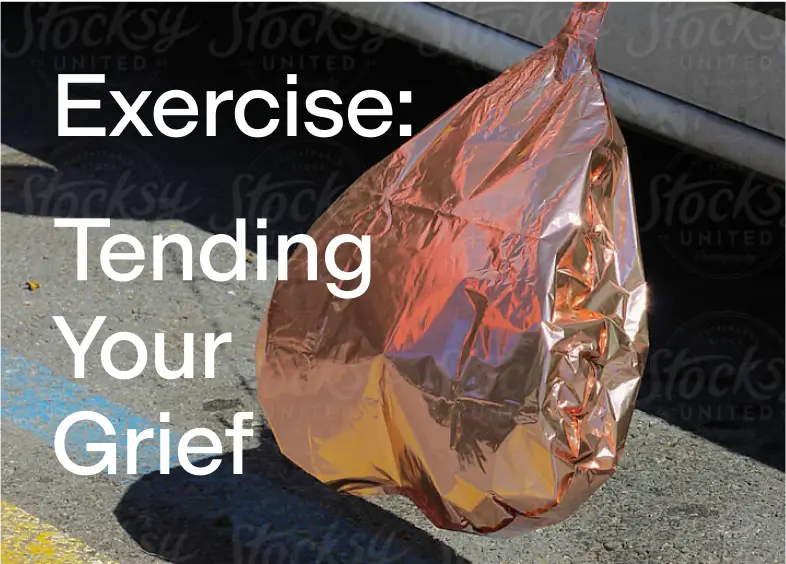
Can you recognize that helping quality, the friend inside? Sometimes it’s there, and other times it may be dormant. If you are not able to connect with that feeling of inner friendliness or kindness, know that it’s possible to invite it.
Meditation practice is about nurturing the qualities we want more of, and cultivating this inner friend is entirely possible. Ask yourself, “If the inner friend were here, what would they guide me to?” (A nap? A good book?) See what comes up.
More Meditations for Clearing Brain Fog on the Happier Meditation App
Your Next Session
Anger is Natural
SESSION 03
Deep Dive
When going through the dissolution of a major relationship, it is only natural that there will be strong emotions—especially rage. When I went through it, I experienced a lot of sharp, fiery anger both towards the other person and towards myself. I even remember having vengeful, cruel thoughts like, “I hope you pay for this!”
You can feel the fire—without feeding it.
It’s so natural for these volcanic emotions to come up, but we don’t have to identify with them so strongly. We can refrain from throwing fuel on the fire, while also not repressing them or being ashamed of them. Acknowledging and being attentive to our anger can help us connect with the wisdom and clarity hidden within it, so that we can find the energy to speak up or act when we need to.
When we are mindful of anger, we can prioritize our intention to communicate clearly over our desire to get back at someone. This also goes for being mindful of someone else’s anger—it might not be easy, but we can learn to listen for the hurt the other is feeling, and respond to the vulnerability of that pain rather than its angry expression.
Angry moments are passing events that occur because of the circumstances. We can practice allowing them to move through, building trust in the fact that they are ephemeral. When we know this in our bones, we can act with integrity and not make matters worse, even when we’re steaming mad.
Pause & Breathe



Oren Jay Sofer
Soothing Resentment’s Burn
Make peace with pettiness through good old understanding.
https://tph-meditations.s3.us-east-2.amazonaws.com/M_06_resenting_someone_(Difficult-Emotions-06)_OS_5min.mp3
Your Turn
Exercise
Anger is Natural
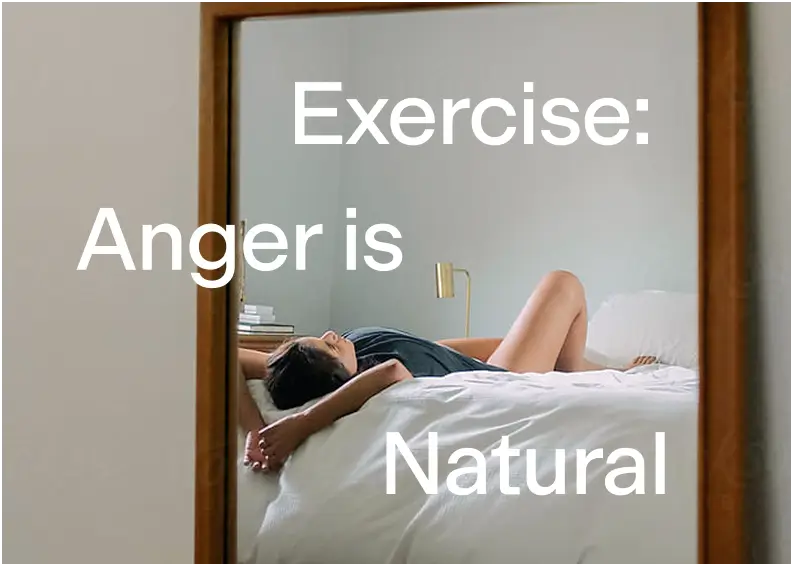
Next time you experience anger, see if you can pause and sense how it feels in the body.
Close your eyes, take a deep breath, and say to yourself, “This is anger, and it’s natural.” Let it wash through. What is it saying? Is there any grounded action called for? Allow it to do its thing, to be alive, to peak and to pass, as it will.
More Meditations for Rekindling Your Spark on the Happier Meditation App
Your Next Session
Stop Spiraling, Gather Strength
SESSION 04
Deep Dive
When my mind is spinning, it’s usually not spinning in the right direction. It’s often spiraling downwards into worry, blame, and shame. I find myself replaying old stories and envisioning worst case scenarios. Without mindfulness, it’s easy to get stuck in negative rumination.
You don’t have to be faithful to your problems.
But one of the great discoveries of meditation is that rather than being pulled in so many directions, we can gather our attention and rest it on one object, like the breath or sound, or even something inspiring like wishes of well-being or appreciation. This protects the mind from spiraling into negativity and gives us a chance to rest.
When I was going through a very difficult time in my breakup, there was a song I would sing. It had a sweet refrain and singing it to myself had a soothing quality. By gathering my attention, almost rocking myself into a more relaxed state with this song, I was able to give my upset, scattered mind a break.
I want this for you, too. When your mind is calm and refreshed, you can turn back towards the difficult problems you face with more creativity and patience. This meditation will help you practice resting in this way.
Pause & Breathe



Pascal Auclair
Feel Good with Gratitude
Through the protection of gratitude, the world becomes brighter and more hopeful, and the mind becomes more balanced. Gratitude: cultivate it!
https://tph-meditations.s3.us-east-2.amazonaws.com/M_04_Appreciating-Enjoying-What-you-Notice_PA_5min.mp3
Your Turn
Exercise
Stop Spiraling, Gather Strength
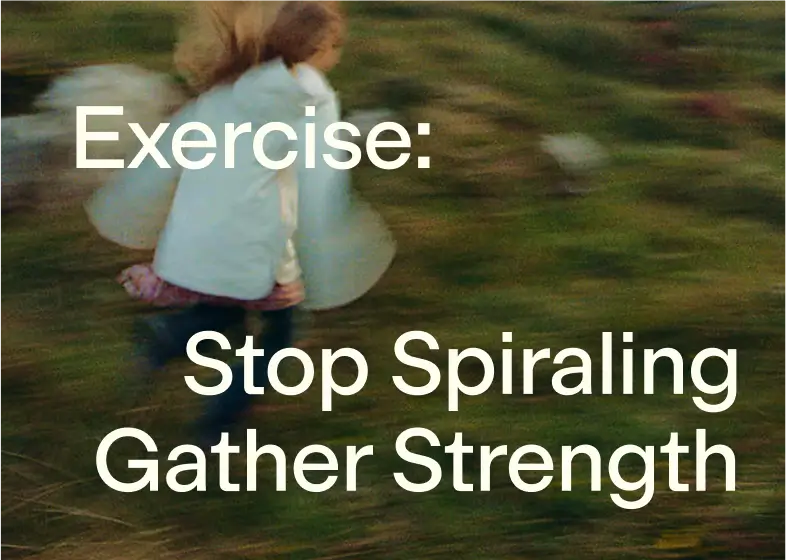
What would be a good resting place for your attention? It could be gazing at the sky or trees outside your window, or listening to music that has a positive effect on you. Something I like to do is reflect on people that I appreciate.
Choose a place for the mind to land, and give yourself to it for a few minutes today, knowing that you don’t have to be faithful to your problems, following all thoughts related to them. You can practice allowing the mind to gather around something beautiful, to rest and refresh itself there.
More Meditations for Sleeplessness on the Happier Meditation App
Your Next Session
Rediscover Yourself
SESSION 05
Deep Dive
There comes a time when the mind can start to open—very gradually, without forcing—to new possibilities. In the midst of loss, we rightly focus on grieving at first; we’ve lost something significant, and we need to honor that. But eventually, it helps to stay curious about when we might be ready to look toward the field of possibilities, to see what new opportunities this situation might hold.
There’s something new that can emerge—even from the ashes.
We don’t force this shift, but we can watch for when we’re able—maybe with a gentle prompt—to loosen the obsessive grip on loss and begin asking, “What can I create now? What can I make out of this?” It’s at that point that joy or imagination might be reborn, that sense of creativity returning. It’s like a phoenix rising from the ashes: though everything seems destroyed, something new and unexpected can emerge.
For me, I remember realizing at some point, “Who am I on my own?” I had been part of a “we” for so long that I wasn’t quite sure. That curiosity—discovering what remains when you’re no longer defined by a relationship—can be both intriguing and liberating. It’s the possibility that from these ashes, something new can arise.
There’s also a stage in grief where you can’t imagine playfulness or joy. But one morning, or maybe in a quiet evening, that spark shows up—ever so shyly—and you sense a small surge of confidence. It’s like a whisper saying, “There’s something I can do with this. I can reinvent myself. I can discover who I am beneath the pain or the loss.” And in that spark lies the beginning of a new chapter.
Pause & Breathe



Pascal Auclair
Rediscover the Familiar
This is the first time you’ve ever been here, now. Pascal invites you to discover the vivid and mysterious experience of this new moment.
https://tph-meditations.s3.us-east-2.amazonaws.com/M_01_Rediscover+the+Familiar_PA_5min.mp3
Your Turn
Exercise
Rediscover Yourself
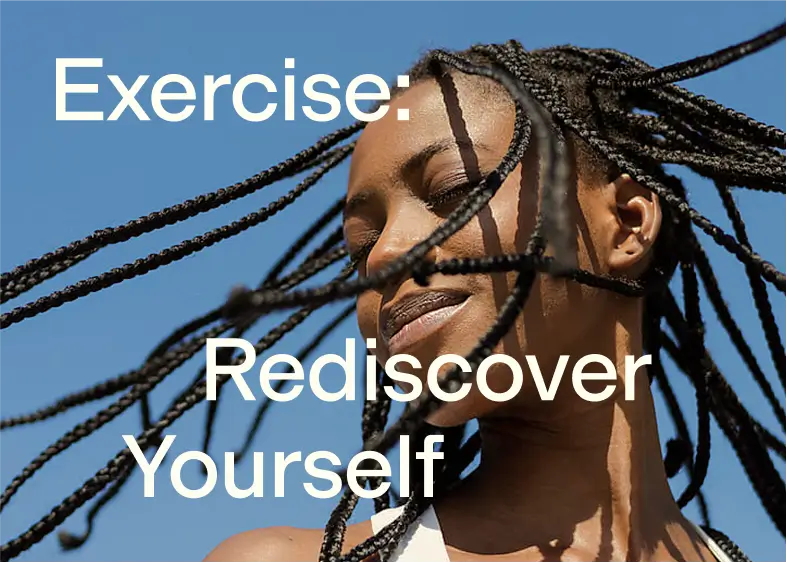
Take a moment—maybe close your eyes if that feels right—and think about these questions:
What do I want to honor in myself right now?
Maybe there’s a strength or quality that used to feel really alive, but now it’s gone quiet. Let yourself acknowledge it—maybe it’s courage, creativity, compassion, or something else that mattered to you.
What do I want to invite back into my life?
Is there something that disappeared for a while—a passion, a sense of confidence—that could use a little attention? It’s okay to gently welcome it in again.
What small spark can I “fluff” or boost so it feels more alive?
You might imagine combing out any tangles, giving it room to grow. Maybe it’s a bit scruffy or wobbly, but that’s okay—it still belongs to you. Remind yourself, “Yes, I can bring this back. I have the right to feel this way again.” You might picture yourself saying, “Come on, you can do it,” like you’d encourage a friend.
Let these questions be gentle prompts. If you notice even a tiny spark of something you used to enjoy about yourself, recognize it might just be resting, waiting for your permission to come forward. Embrace that possibility—sometimes it’s the little sparks that reignite our sense of who we are.
More Meditations for Sleeplessness on the Happier Meditation App
Closing Notes
Healing is better with a friend beside you.
Send this guide to someone navigating separation—because the path forward is easier when you're not walking it alone.
Questions? We’ve got answers.
What is Happier Meditation and how did it get started?
Happier Meditation is an award winning app created to help you be a stronger, happier you — day in and day out, in good times and during the rough times. We have a library of resources in the app and elsewhere that have been curated to help you explore questions like:
- What the heck does it mean to be mindful?
- How do I meditate?
- What will meditation do for me? Can’t I just, “be mindful?”
- Will you help me practice meditation in a way that fits with my life and still helps me feel better?
- This is really interesting and helpful for me, how do I go deeper and find out more?
We got started in the general wellness business back in 2014, then started to collaborate with Dan Harris who wrote the book, 10% Happier Meditation. Now we have an app full of curated meditations, lessons, and content that continues to evolve based on our community’s needs, a weekly newsletter, and a website that’s chock full of resources.
Can meditation treat or cure symptoms like hot flashes or night sweats?
No—meditation is not a treatment or cure for vasomotor symptoms like hot flashes or night sweats. These symptoms are physical and often related to hormonal changes, and it's important to talk with a healthcare provider about medical options.
That said, mindfulness can be a powerful support tool for managing the mental and emotional impact of menopause—things like stress, sleep disruptions, irritability, or anxiety. Our goal with this guide is to complement—not replace—evidence-based care.
If you're looking for trusted medical guidance, we recommend checking out expert-backed resources like Alloy Women's Health.
A Note on Medical Advice
Happier Meditation’s Mindful Menopause Guide is not intended to treat, cure, or diagnose medical conditions—including vasomotor symptoms like hot flashes and night sweats. While mindfulness can support emotional well-being during this transition, it is not a substitute for medical care.
We encourage anyone experiencing physical symptoms to talk with a qualified healthcare provider. Mindfulness is a complementary tool—one part of a broader care plan that might include lifestyle changes, medication, or hormone therapy.
If you're looking for trusted medical support, we recommend exploring evidence-based platforms like Alloy Women's Health.
How is Happier Meditation priced?
Happier Meditation has two levels of access, free and subscribed.
- An app subscription gives you access to everything in the app! Our subscription is available at $99.99USD/year.
- The app is free to download and with a free account you get three courses: Unlearn to Meditate, The Basics, and The Dalai Lama's Guide to Happiness, plus over 50 guided meditations.
What types of meditation and mindfulness practices does Happier Meditation offer?
This is a great question and there are two parts to the answer.
Meditation
The main type of meditation taught in the app is based in a practice called Vipassana which, it’s believed, is the kind of meditation taught by the Buddha. So we want to acknowledge the roots of what we’re doing and our gratitude to all the teachers who came before and kept this knowledge vibrant and evolving.
Several modern teachers, including Sharon Salzberg and Joseph Goldstein, went and studied with teachers in Asia and and returned to start a tradition here that’s called Insight Meditation.
No matter what we name it, this kind of meditation involves paying close attention to an anchor or focus point. It’s often the breath but it can be all kinds of sensations and the app includes variations like:
- Breathing
- Sound Meditation
- Open Awareness Meditation
- Body Scan
- Walking Meditation
Meditation can also help us train our minds to have new patterns like:
- Loving-Kindness
- Concentration
Mindfulness
We practice meditation, paying attention, so we can be more mindful because being mindful can help us build internal strength to deal with life. If you’re wondering what the difference is between meditation and mindfulness, check out this article, Mindfulness vs Meditation.
When we talk about mindfulness at Happier Meditation we mean being aware of what’s going on in and around us right now — and trying not to judge it. Once you get used to paying close attention while you’re formally meditating, it gets easier to pay close attention to things throughout your day.
The app will help you incorporate mindfulness into lots of spots in your day! From putting on your pants to drinking your coffee, from talking to a friend or co-worker, driving, eating or falling sleep, the app has guided meditations and content to support you. Then you get to play with it and see where else you can be mindful!
Who are the teachers and experts behind Happier Meditation?
In addition to the long line of teachers who’ve brought mindfulness meditation through the 2,000+ years from the Buddha to today, Thank You!, Happier Meditation is indebted to folks like Sharon Salzberg, Joseph Goldstein and Jon Kabat-Zinn who were some of the champions of Insight Meditation in the west. We mostly teach this kind of meditation at Happier Meditation although there are other influences that compliment Insight Meditation and are also included in the app.
On staff we have a group of highly trained meditation teachers and practitioners who really walk the walk! This team manages our pedagogy and finds other trained and experienced meditation teachers, mostly with 10 years of teaching experience or more, to record content for you.
Among the teachers who record meditations for you to use in the app, you’ll find diverse voices and perspectives — because mindful meditation is available to everyone.
Can beginners use Happier Meditation?
Definitely! Beginning meditators are welcomed at Happier Meditation. We’ve created courses and meditations to meet you wherever you are in your journey with mindfulness meditation — from never ever to long time meditators.
If you’re just getting started, try courses like Unlearn to Meditate, Common Questions and Essential Advice. You can also explore single guided meditations that help you bring mindfulness into your daily routine like On The Way To Work.
As soon as you start, you’re a meditator! And when you’re ready to go deeper, there’s plenty to practice. The app’s build to help you along your journey and you can email support@meditatehappier.com any time with questions.
What kind of resources does Happier Meditation have for dealing with stress, anxiety, and other challenges?
When you practice mindfulness meditation, you practice getting to know your own mind and its habits so you can approach all of life’s emotions with strength — even the messy and the imperfect! There are lots of resources in the app that help you specifically practice handling stress, anxiety plus lots of other life challenges, from difficult people to pain, from anger to aging.
In a quick search of the app for stress or anxiety you’ll find 3 courses, over 80 guided meditations and more. Here’s just a small sample:
Courses
- Taming Anxiety This course will increase your ability to cope with challenging situations. You’ll learn tools for examining and overcoming your own particular anxiety feedback loop, while building the skills of mindfulness, compassion, and bravery along the way.
- Phrases for Stress Sometimes just remembering a few meaningful words can help you set yourself up for success. In this course, you’ll learn simple phrases that will help you cut through unhelpful mental chatter and reduce stress.
- Stress Better You can’t change the fact that life is stressful, but you can change how you respond to it. We’ve brought together some of the world’s top stress-reduction experts to offer you practical tools to bounce back from stress with more clarity, perspective, and energy to move you toward your goals.
Guided Meditations
- Self-Kindness for Stress Being kind to ourselves in hard times bolsters our resilience, so we can learn from setbacks rather than getting stuck in rumination.
- Stress in the Body Explore the places where you hold stress in the body, and use guided techniques to cultivate more ease and relaxation.
- Stepping Back from Stress Taking a bigger perspective and staying grounded in the body helps us experience life’s inevitable stress without being taken over by it.
- Reduce Anxiety, Build Resilience Build your capacity to prevent overwhelm by feeling the anxious sensations in your body while staying anchored in what feels ok right now
- Soothe Stressful Thoughts Relieve your anxiety by exploring the relationship between stress and thinking while learning to break unhealthy habit loops.
How can I download the Happier Meditation app? Download the Happier Meditation App.
You can use the Happier Meditation app on iPhone, iPad, iPod touch, Apple Watch and Android mobile devices.
Download the free Happier Meditation app from the Apple App Store or the Google Play store.
Happier Meditation isn’t available through a web browser or on desktop computers. Please check out our Help Center article Using Happier Meditation on a Computer for more information on the content you can access through the web.
How can I download the Happier meditation app?
If you don't yet have the app on your iPhone, iPad or Android device yet, download it for free from Apple's App Store or the Google Play store and create a free account. We don't have this available for computers so if that's what you want to work on, check out our Help Center article Happier Meditation on a Computer.
.webp)
.webp)
.webp)
.webp)
.webp)
.webp)
.webp)
.webp)
.webp)
.webp)